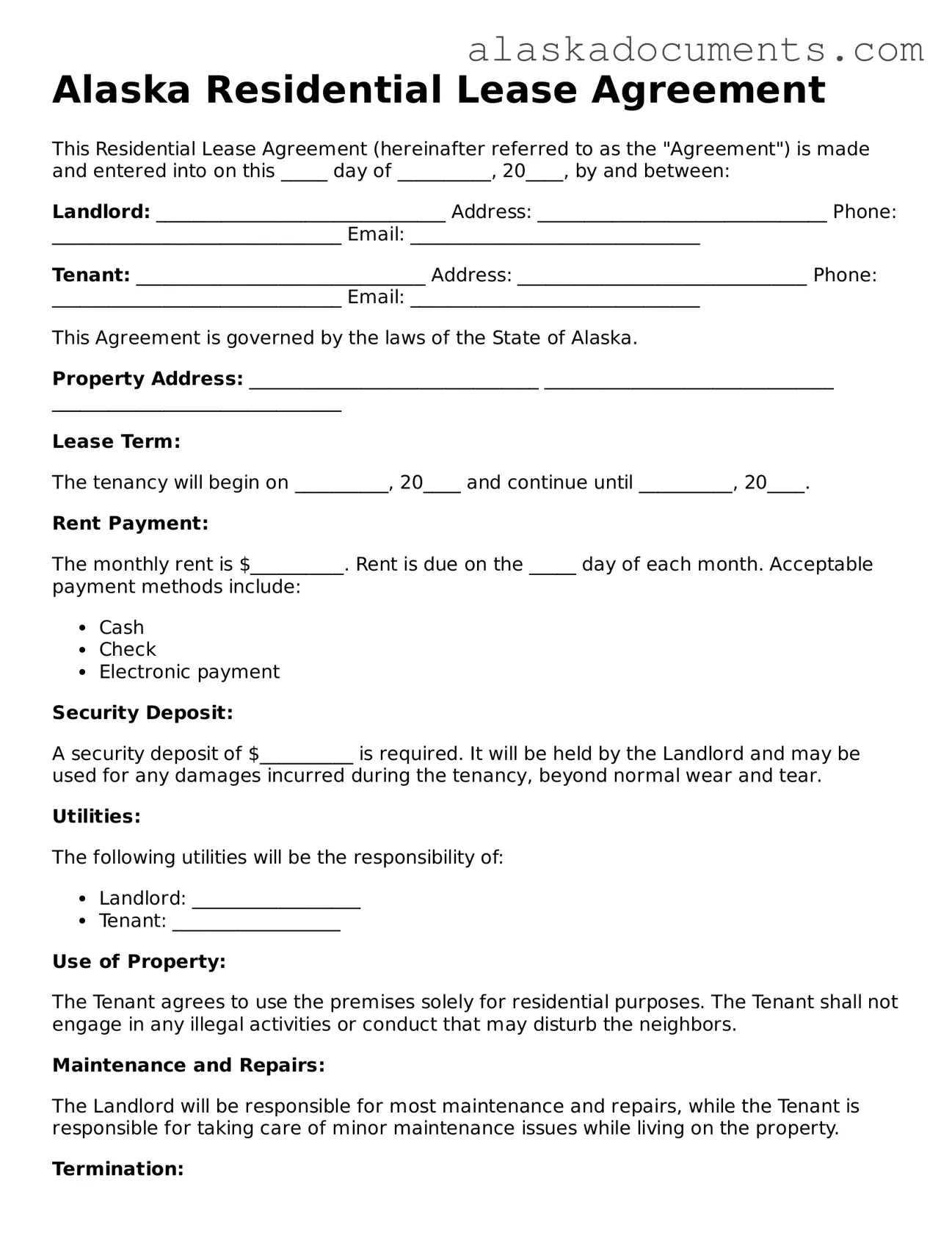Alaska Residential Lease Agreement
This Residential Lease Agreement (hereinafter referred to as the "Agreement") is made and entered into on this _____ day of __________, 20____, by and between:
Landlord: _______________________________
Address: _______________________________
Phone: _______________________________
Email: _______________________________
Tenant: _______________________________
Address: _______________________________
Phone: _______________________________
Email: _______________________________
This Agreement is governed by the laws of the State of Alaska.
Property Address: _______________________________
_______________________________
_______________________________
Lease Term:
The tenancy will begin on __________, 20____ and continue until __________, 20____.
Rent Payment:
The monthly rent is $__________. Rent is due on the _____ day of each month. Acceptable payment methods include:
- Cash
- Check
- Electronic payment
Security Deposit:
A security deposit of $__________ is required. It will be held by the Landlord and may be used for any damages incurred during the tenancy, beyond normal wear and tear.
Utilities:
The following utilities will be the responsibility of:
- Landlord: __________________
- Tenant: __________________
Use of Property:
The Tenant agrees to use the premises solely for residential purposes. The Tenant shall not engage in any illegal activities or conduct that may disturb the neighbors.
Maintenance and Repairs:
The Landlord will be responsible for most maintenance and repairs, while the Tenant is responsible for taking care of minor maintenance issues while living on the property.
Termination:
To terminate this Agreement, either party must provide a written notice of _____ days. This notice must be delivered to the other party at the addresses provided above.
Signatures:
IN WITNESS WHEREOF, the parties have executed this Agreement as of the date first above written.
Landlord Signature: _____________________________
Date: ________________
Tenant Signature: _____________________________
Date: ________________
This Agreement is binding upon the parties and their respective successors and assigns.
